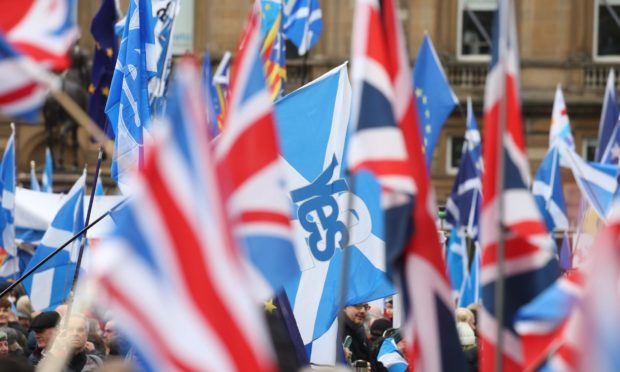Secretive UK Government polling on public attitudes towards the Union must be published in the next four weeks, a court has ruled.
The taxpayer funded polls, which are believed to show an increase in support for Scottish independence, were shared with ministers in 2018 and 2019, but were never made public.
However, the Cabinet Office has now been ordered to publish the polls within 28 days after a two year legal battle, led by the SNP’s Tommy Sheppard.
The party’s constitutional affairs spokesman first sought to access the polling in June 2019 with a Freedom of Information request, but was refused.
The Cabinet Office cited an exemption clause which related to providing a safe space for the development of government policy.
A lesson in not giving up… Two years after making an FOI request and ending at Tribunal, the UK government has now been ordered to disclose information about using taxpayers' money to poll public attitudes to the Union. Read more here: https://t.co/WDwfCKhH7s
— Tommy Sheppard MP (@TommySheppard) June 15, 2021
Mr Sheppard appealed to the Office of the Information Commissioner arguing that since the UK government had no stated intention to review or alter policy in respect of the union, the clause should not apply.
The ICO sided with the government and in February 2020 the SNP MP then took the case to the First-tier Tribunal (General Regulatory Chamber) Information Rights.
The body ruled that the information requested “relates to the implementation of existing policy rather than to policy development”.
They added that there was a “clear public interest in seeing what information the Cabinet Office is using to assess public attitudes to the Union; a public interest in understanding more about any analysis the Cabinet Office is undertaking regarding the strength of the Union; a public interest in transparency regarding the use of public funds and a clear public interest in knowing more about what that money paid for.”
Right to know
Mr Sheppard said: “This is a very welcome decision with significant consequences. The Cabinet Office has been hiding this data claiming that they were developing policy. I have been clear from the start that this wasn’t the case – maintaining the Union is clearly an ongoing policy of the UK government – and the Tribunal has come to the same conclusion.
“We have the right to know how much of taxpayers’ money has been spent on it, and what the polling says. If it’s paid for by the public, the results must be available to the public, otherwise the UK government is using taxpayers’ money to further their own political ends.
“I have long suspected that the UK government is determined to keep this polling secret because the results make uncomfortable reading for them and show widespread and engrained support for political control coming back to Scotland through independence.
“Now we shall see. Not only do we need to see the data I originally asked for, I have today made a further FOI request for data that has been gathered in the past two years.”
He added: “There are wider consequences to this decision too. The presumption should be in favour of transparency and only in exceptional circumstances should information not be disclosed when requested.
“It should never have had to go to a tribunal to get this decision, and the whole process should not have taken two years.”
A UK Government spokesman said: “The UK Government regularly commissions research in different parts of the UK to understand public attitudes and behaviours to inform our campaigns and policies.
“This enables us to deliver strong national and cross-government communications campaigns, including to support the UK’s response and recovery from the pandemic.
“When considering making research public, we balance our commitment to transparency with the need for Ministers to make decisions on the development of policy based on the data.”
